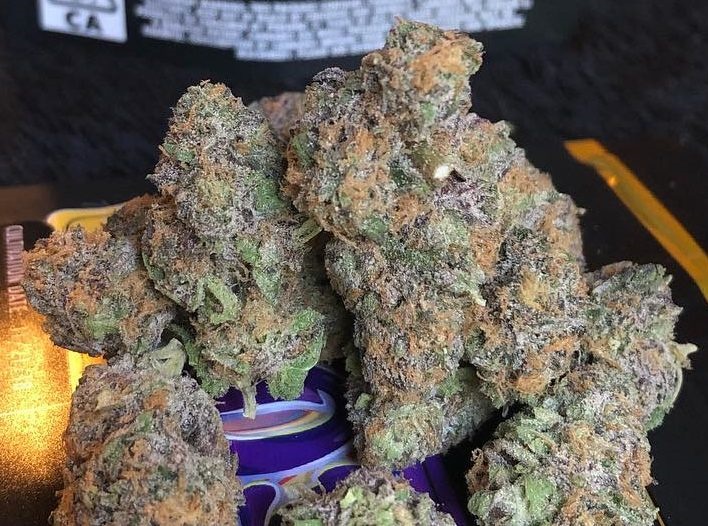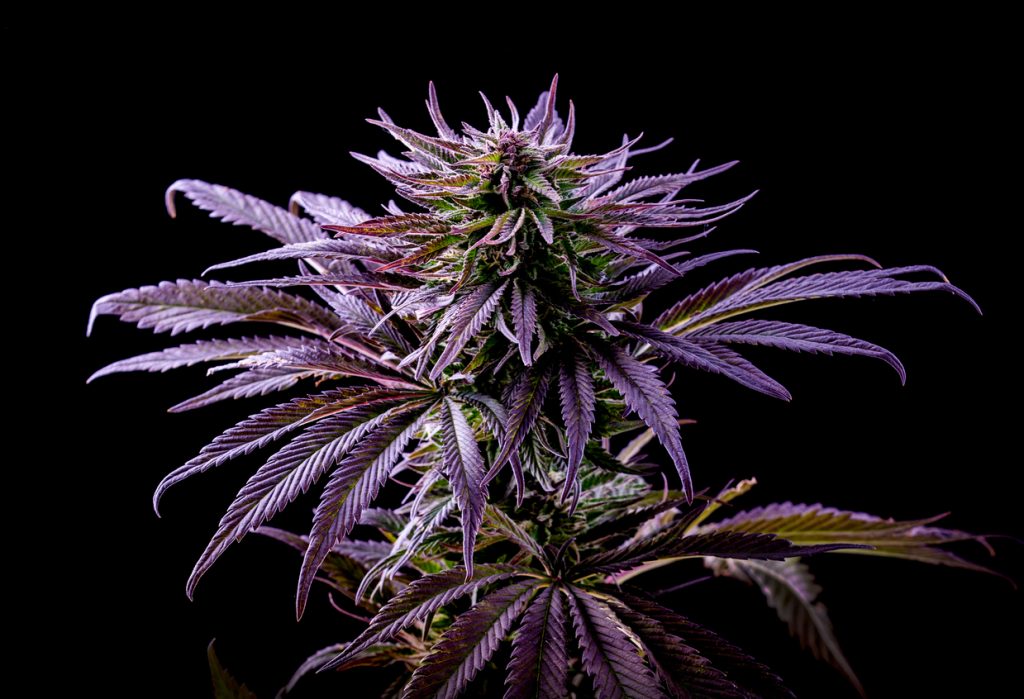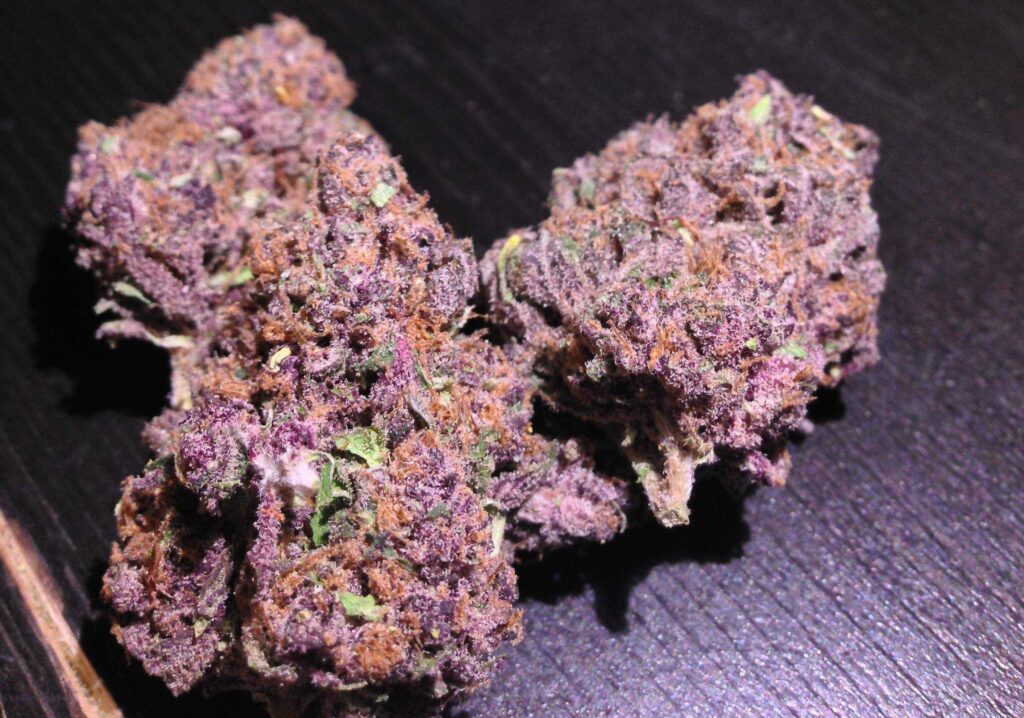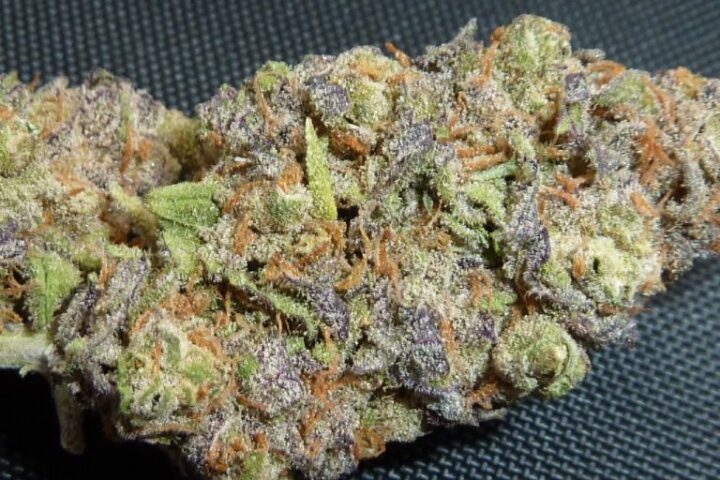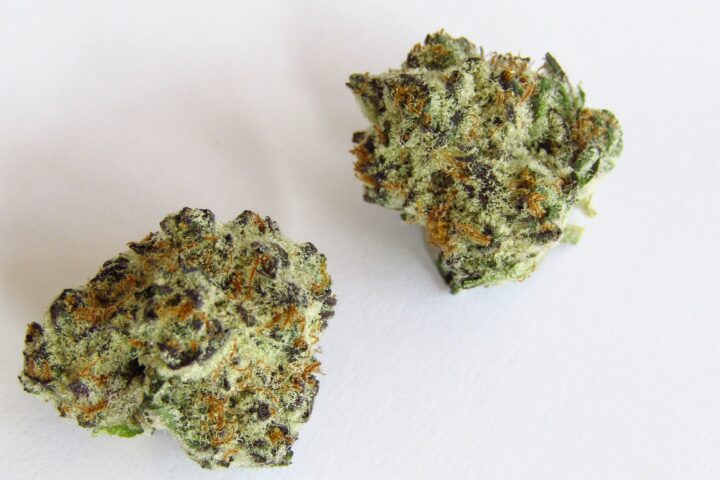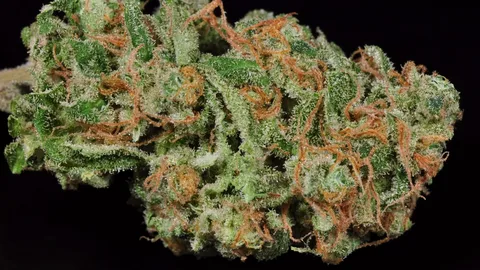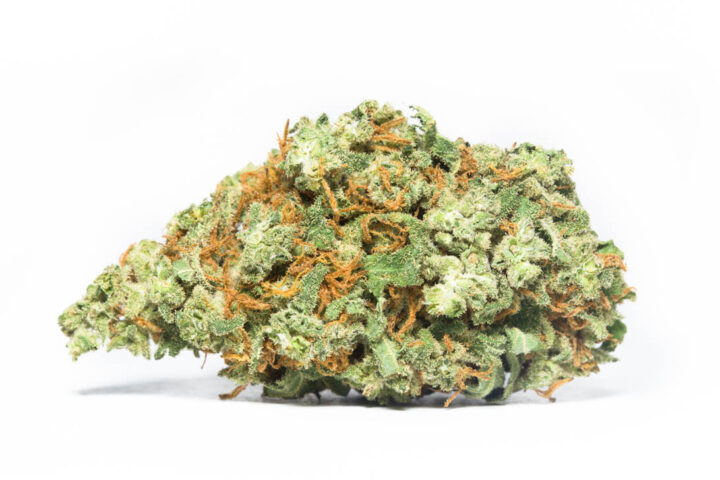Appearance and Origins
Purple Octane Description
The Purple Octane strain is a popular cannabis variety known for its unique appearance and potent effects. Here are some key details about its appearance and origins:
Appearance
- The buds of the Purple Octane strain are typically large and dense, with a deep purple color due to high anthocyanin content.
- They often feature vibrant orange or red hairs and a thick layer of trichomes, giving them a sticky and resinous texture.
- The leaves tend to be medium to dark green in color with some yellowish undertones, which complements the purple buds nicely.
Origins
- The Purple Octane strain is believed to have originated from the cross of two popular strains: Bubba Kush and G13.
- This indica-dominant variety has gained a reputation for its potent effects, which include sedation, relaxation, and reduced anxiety.
- Its THC levels are typically high, ranging between 20-25%, making it suitable for experienced cannabis users who seek strong pain relief or stress reduction.
It is worth noting that the Purple Octane strain may exhibit varying characteristics depending on factors such as growing conditions and specific cultivar. However, its distinctive appearance and potent effects make it a sought-after choice among cannabis enthusiasts.
Purple Octane is an indica dominant weed strain known for its vibrant purple hue and potent effects.
- Purple Octane is a popular indicadominant weed strain known for its striking appearance and potent effects.
- The buds of this strain are covered in trichomes, giving them a thick layer of frosty coating that sparkles under light.
- Its vibrant purple hue is caused by the presence of anthocyanin, a pigment produced by the plant’s genetics.
- The leaves and stems of Purple Octane have a deep green color with hints of purple, adding to its overall aesthetic appeal.
- In terms of origins, Purple Octane is believed to be a hybrid strain created through selective breeding of indica-dominant parent strains.
- The exact origin and breeding history of this strain are not well-documented, but it’s thought to have been developed in the Pacific Northwest region of North America.
Purple Octane is known for its potent effects, which are typically associated with indicadominant strains. These can include:
- Relaxation and calming properties
- Sedating effects that promote sleepiness
- Reduced anxiety and stress levels
- Pain relief and inflammation reduction
The THC content of Purple Octane is typically high, ranging from 15-20% in most samples.
Its CBD content is relatively low, but it can still provide some therapeutic benefits for medical patients.
In terms of its overall effect profile, Purple Octane is often described as:
- Euphoric and relaxing
- Sedating without being overly sedative
- Pain-relieving without causing anxiety or paranoia
It was originally bred by crossing a purple phenotype with a highTHC variety.
The appearance and origins of Purple Octane weed strain are fascinating topics that warrant a closer look.
This strain has its roots in the cannabis breeding scene, where growers continually strive to create new and exciting varieties.
Specifically, Purple Octane was originally bred by crossing a purple phenotype with a high-THC variety. This deliberate choice allowed breeders to tap into the genetic potential of each parent plant and unlock new characteristics.
The resulting strain is a unique blend of the best qualities from both parents. On one hand, the purple phenotype contributes its signature deep, rich coloration, while on the other, the high-THC variety infuses the buds with potent psychoactivity.
As for its origins, Purple Octane’s breeding history is tied to the pursuit of creating strains with exceptional potency and flavor. By combining a purple phenotype with a high-THC strain, breeders aimed to create a cannabis variety that would appeal to both recreational users seeking intense effects and connoisseurs looking for complex flavor profiles.
Throughout its development, Purple Octane has undergone careful selection and refinement to ensure it meets the expectations of discerning consumers. The end result is a truly distinctive strain with a captivating appearance and exceptional cannabinoid content.
Cannabinoid Profile
Chemovars and Concentration Levels
The Purple Octane weed strain is a popular and unique variant that has gained attention for its distinct characteristics and effects. When it comes to understanding this strain, one crucial aspect to examine is its cannabinoid profile.
Cannabinoids are the primary compounds responsible for the medicinal and psychoactive properties of cannabis. The two main types of cannabinoids are THC (tetrahydrocannabinol) and CBD (cannabidiol). THC is known for producing psychoactive effects, while CBD has been associated with potential therapeutic benefits without inducing a high.
Other notable cannabinoids present in the Purple Octane strain include CBG (cannabigerol), CBN (cannabinol), and CBC (cannabichromene). Each of these compounds plays a role in the plant’s overall effects, with some providing potential therapeutic benefits while others contribute to the psychoactive experience.
The cannabinoid profile of Purple Octane typically consists of:
- THC: 20-25%
- CBD: 0.5-1%
- CBG: 1-2%
- CBN: 0.5-1%
- CBC: 0.1-0.5%
The specific concentration levels of these cannabinoids may vary depending on the grower, cultivation methods, and geographical location. This is due to factors such as climate, soil quality, water, and nutrient availability, all of which can impact cannabinoid production.
Chemovars, short for chemotypes, refer to different chemical compositions of cannabis plants. While each plant has its unique characteristics, some may exhibit higher concentrations of certain cannabinoids than others. This is due to the complex genetic makeup of cannabis plants, which allows for various combinations of cannabinoid and terpene production.
When exploring different chemovars like Purple Octane, it’s essential to understand that even within the same strain, individual plants may exhibit variations in their chemical composition. These variations can result from factors such as:
- Cultivation conditions: Growers may adjust environmental factors like temperature, humidity, and light exposure to promote specific cannabinoid production.
- Genetic diversity: Plants with varying levels of genetic diversity may exhibit different chemical compositions due to the unique expression of their genes.
In summary, understanding the cannabinoid profile and chemovars of Purple Octane weed strain involves examining its composition of THC, CBD, CBG, CBN, CBC, and other cannabinoids. Recognizing variations in concentration levels and exploring factors that influence these compositions can help users make informed decisions about this unique variant.
Analysis from various labs indicate that Purple Octane typically contains between 1822% THC,
- The cannabinoid profile of Purple Octane, a popular weed strain, has been analyzed by various labs to determine its potency and composition.
- The analysis indicates that Purple Octane typically contains between 18-22% THC (tetrahydrocannabinol), which is the primary psychoactive compound found in cannabis.
- THC is responsible for the euphoric and intoxicating effects associated with cannabis use, and its concentration can vary significantly depending on factors such as the strain’s genetics, growing conditions, and curing process.
- In addition to THC, Purple Octane may also contain other cannabinoids, including CBD (cannabidiol), which is a non-psychoactive compound that has been shown to have potential therapeutic benefits.
- The exact cannabinoid profile of Purple Octane can vary depending on the specific batch or sample being tested, but in general, it is considered a high-THC strain with potential medicinal and recreational uses.
- Some labs may also report on the presence of other cannabinoids, such as CBG (cannabigerol) and CBN (cannabinol), which are present in smaller concentrations compared to THC and CBD.
- It’s worth noting that the cannabinoid profile of a cannabis strain can affect its effects, potency, and potential therapeutic benefits, so it’s essential to consider these factors when selecting or using Purple Octane.
with trace amounts of CBD. The dominant terpenes present in this strain are myrcene, pinene, and caryophyllene.
The Purple Octane weed strain has a cannabinoid profile that includes THC (tetrahydrocannabinol) and trace amounts of CBD (cannabidiol). The dominant cannabinoids in this strain are primarily responsible for its psychoactive effects, while the presence of CBD contributes to a more balanced and therapeutic experience.
THC is the primary psychoactive compound in cannabis, accounting for approximately 70-80% of the strain’s overall cannabinoid content. Its presence induces feelings of euphoria, relaxation, and altered perception. THC is also known to have various medicinal benefits, including pain relief and appetite stimulation.
CBD, on the other hand, makes up a minimal portion (around 1-2%) of the strain’s total cannabinoids. While its effects are relatively mild compared to THC, CBD has been shown to have several therapeutic advantages, such as anti-inflammatory properties and seizure suppression. Its presence in Purple Octane contributes to an overall more balanced and soothing experience.
As for other cannabinoids present in the Purple Octane strain, CBG (cannabigerol) and CBC (cannabichromene) are also detected in trace amounts. These cannabinoids have shown promise in their own right, with potential medicinal benefits including anti-inflammatory effects and antioxidant properties.
The presence of these minor cannabinoids underscores the complexity and diversity of cannabis chemistry. Each cannabinoid contributes to a unique and holistic experience, highlighting the importance of proper strain identification and understanding when exploring various cannabis products.
Clinical Effects
Therapeutic Properties and Potential Risks
The Purple Octane strain of cannabis is known for its intense, long-lasting effects, making it a popular choice among users seeking relief from pain and stress.
One of the key clinical effects of Purple Octane is its ability to reduce anxiety and promote relaxation, thanks in part to its high levels of indica-based terpenes such as myrcene and beta-pinene.
The strain’s therapeutic properties have been reported to include:
- Reduced inflammation and pain relief
- Improved mood and reduced anxiety
- Increased appetite and improved sleep quality
However, potential risks associated with Purple Octane include:
Risks:
- Panic attacks and increased heart rate in some users
- Marijuana-induced psychosis in individuals with a history of psychotic episodes
- Dependence and withdrawal symptoms in heavy users
It is essential to note that individual tolerance and sensitivity to Purple Octane can vary greatly, making it crucial for users to start with low doses and gradually increase as needed.
Purple Octane may alleviate symptoms associated with chronic pain, anxiety, and insomnia due to its high THC content.
Clinical effects of Purple Octane are attributed to its high THC content, which can provide relief from various medical conditions.
The primary clinical effects of Purple Octane include:
- Analgesia
- Pain reduction and management in individuals with chronic pain due to its potent THC content.
- Sedation and relaxation, which can aid in treating anxiety disorders.
- Increased sleep quality and duration for patients suffering from insomnia.
Purple Octane’s high THC content also contributes to its potential therapeutic benefits:
- Reduced inflammation and improved symptoms associated with multiple sclerosis (MS).
- Increased appetite and alleviation of nausea in patients undergoing chemotherapy.
- Relief from spasms and tremors, providing potential benefits for patients with conditions like Parkinson’s disease or epilepsy.
However, it is essential to note that the clinical effects of Purple Octane can vary depending on factors such as individual tolerance, dosage, and consumption method.
Consulting a healthcare professional before using Purple Octane or any cannabis product is recommended to discuss potential benefits, risks, and appropriate usage guidelines.
- Wookies Weed Strain Information - October 9, 2024
- Ya Hemi Aka Yahemi, Ya-Hemi Weed Strain Information - October 9, 2024
- White Cookies Aka White Oreos Weed Strain Information - October 8, 2024

